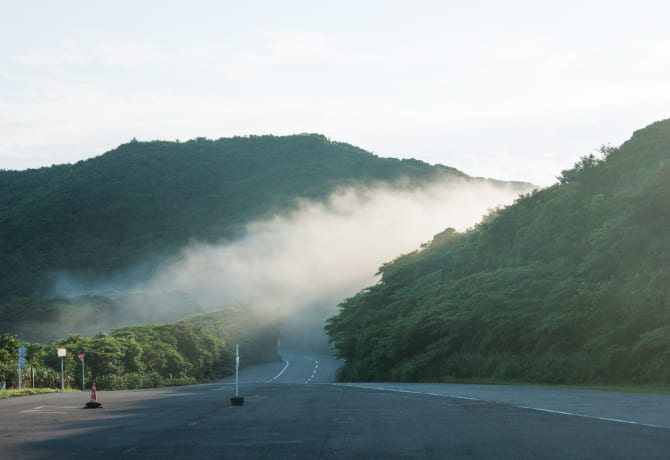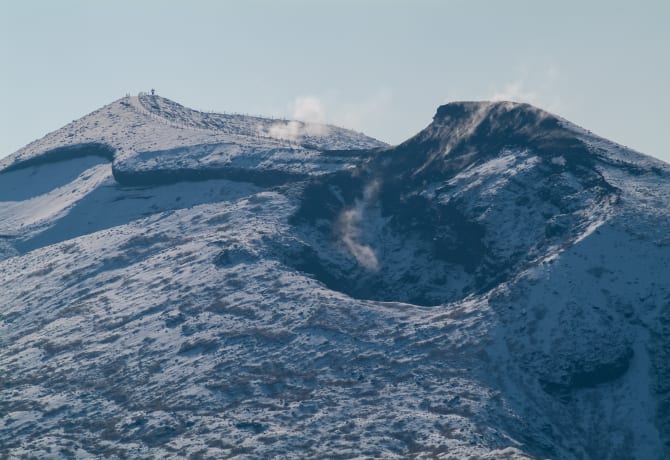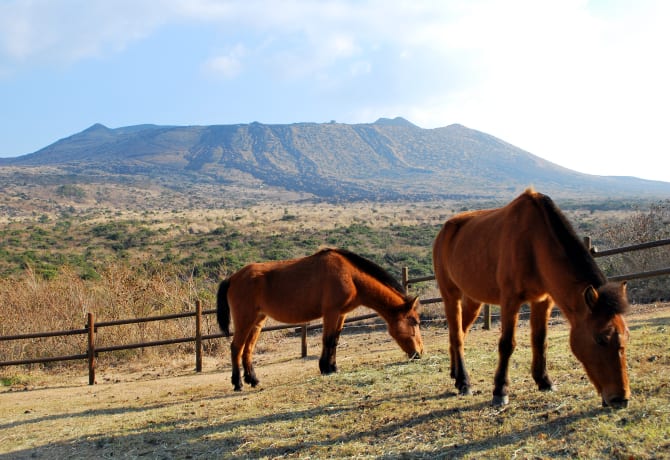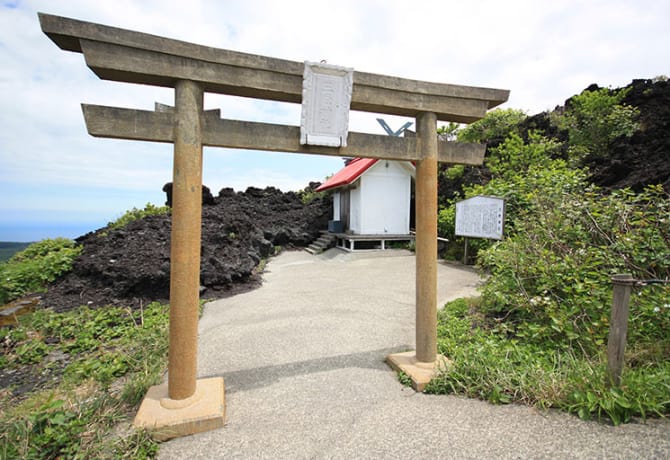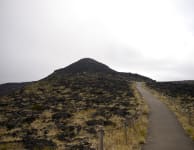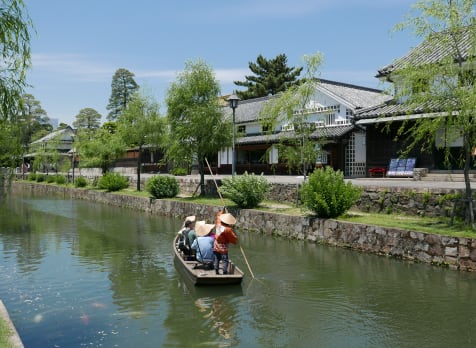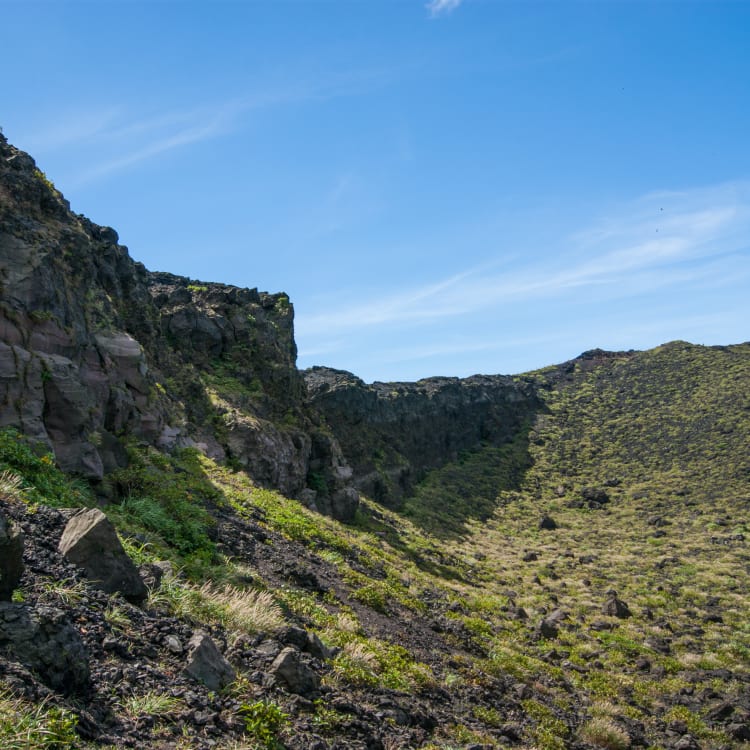

ITINERARIES Oshima—An Island Escape Relaxation and adventure on the largest of Tokyo's islands
Hop on a high-speed jet ferry for the two-hour boat ride from Tokyo to Izu Oshima Island—well-loved among locals for its camellia flowers, hiking trails, and water sports.
Highlights
- Hiking and walking around the crater on Mount Mihara, a 758-meter tall active volcano
- Soaking in the Motomachi Hamanoyu hot spring, with spectacular sunset views
- Feasting on bekko sushi, a local delicacy of fish marinated in zesty chili that can be found in many eateries on the island
How to Get There
High-speed jet ferries depart from Takeshiba Pier. The pier can be accessed from Takeshiba Station or Hamamatsucho Station. Tokai Kisen runs the high-speed boats to Okada Port on the west coast of Oshima Island (1 hour 45 minutes). There are also flights run by New Central Airservice (30 minutes) from the Tokyo area.
Oshima, with its unsullied nature and laid-back pace, is surrounded by the clear blue waters of the Pacific Ocean. Located 120 kilometers south of the mainland, it is the largest of the Izu Islands. As much as 97 percent of its area is preserved as part of the Fuji-Hakone-Izu National Park, which includes Mt. Fuji.
The 758-meter Mt. Mihara, an active volcano that towers over Oshima Island, last erupted in 1986 in what is dubbed by Japanese media as Gojinkasama (fire of the gods), spewing lava around the island. Learn more about the history of the Mt. Mihara eruptions and how they have led to the island's volcanic structures and geographic formations.
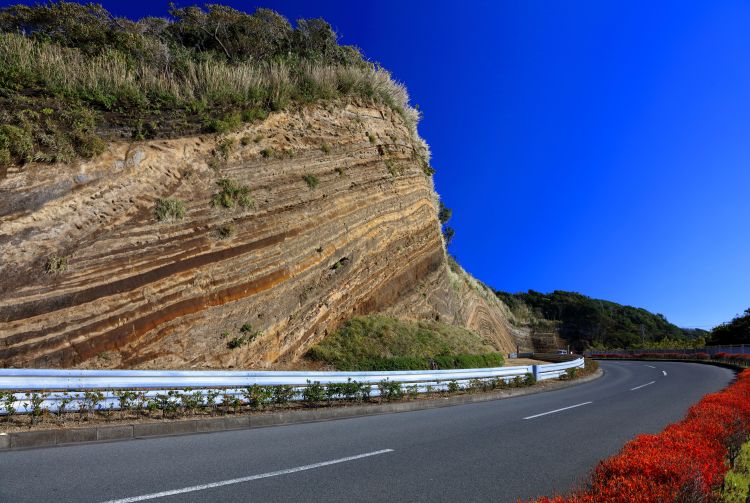
Geography class comes to life
Put in context what you learned at the museum by visiting the volcanic cliffs on the southwestern side of the island. At around 30 meters tall and around 600 meters long, the cliffs are a magnificent series of stripes formed by layers and layers of sediment, owing to repeated eruptions of Mt. Mihara in the past.
Hike up the volcano, which has been calm since its last major eruption in 1986. Mihara Shrine, which you will pass by near the summit, is revered as a holy site.
Allow one to two hours for the entire hike, including the caldera circuit, departing from Miharayama Onsen.
Take a closer look at the reddish-brown sediment in the caldera by following the summit trail—known as the Ohachi-meguri course—encircling the volcanic crater, which is about 300 meters in diameter.
Standing at the crater observation deck at the volcano's outer rim, you will see the desolate terrain of hardened lava sediment set in beguiling contrast against the pristine blue waters in the distance. On a clear day, you can see as far as the Izu Peninsula, with Mt. Fuji and Hakone in the distance.
This huge Oshima cherry tree on the northeastern side of the island has a trunk of more than eight meters in circumference. It is so large that it is said to have served as a landmark for passing ships, and is a species of cherry trees native to the Izu Islands.
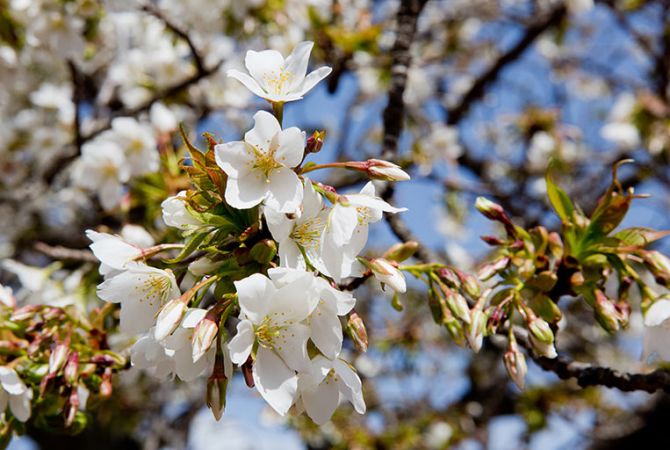

Stop and smell the flowers
With as many as three million camellia trees on Oshima Island, it is easy to see why the local economy has been centered on the flower. The park includes a camellia garden with about 1,000 species of the flower that is in full bloom between January and March.
An adjacent zoo, free-of-charge for visitors, has animals such as ring-tailed lemurs and red pandas living in a natural habitat.
Enjoy spectacular views at dusk from this open-air onsen, as the setting sun turns the ocean and sky into shades of red and orange. As it is a mixed-gender bath, swimsuits are necessary.






















































